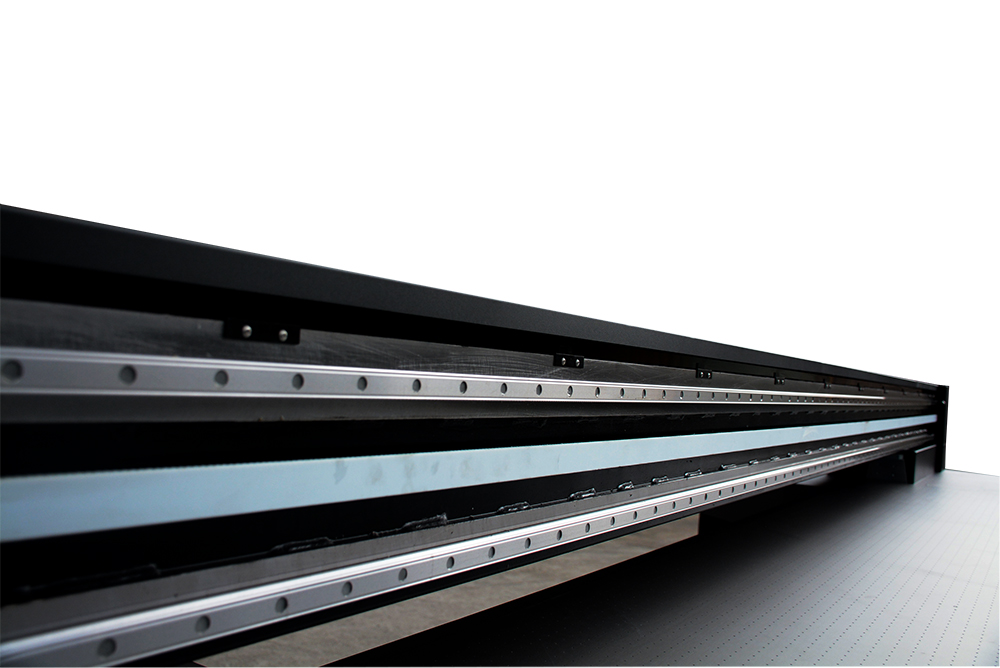UV Flatbed Printer: Guidelines for Printing on Metal Surfaces
Before diving into the specifics of metal printing, let’s briefly touch on what UV flatbed printing is all about. Unlike traditional printing methods that rely on inks that dry through evaporation or absorption, UV printing uses ultraviolet light to instantly cure (harden) the ink as it’s applied to the substrate. This process offers several advantages, including faster production times, enhanced durability, and the ability to print on a wide range of materials, including metal.

For metal surfaces, UV printing allows for intricate designs, vivid colors, and textures that traditional methods might struggle to achieve. Whether you’re creating promotional signs, industrial labels, or decorative art pieces, UV flatbed printing on metal can bring your vision to life with stunning clarity and longevity.
Preparing the Metal Surface for Printing
The success of your metal print begins long before the ink hits the surface. Proper surface preparation is crucial for ensuring the ink adheres well and the final product looks professional. Here are a few steps to follow:
Cleaning the Surface: Start by thoroughly cleaning the metal to remove any dirt, oil, or contaminants. A mild detergent and water solution can work wonders, but for tougher grime, consider using a specialized metal cleaner. Always dry the surface completely before moving on to the next step.
Sanding or Etching: Depending on the type of metal and the desired finish, you might need to sand or etch the surface slightly. This creates a rough texture that helps the ink grip better. Be sure to use the appropriate grit of sandpaper or etching solution for your specific metal type.
Applying a Primer: A primer can further enhance ink adhesion, especially on smooth or non-porous metals like aluminum or stainless steel. Choose a primer specifically designed for metal surfaces and follow the manufacturer’s instructions for application.
Choosing the Right Ink and Print Settings
Not all UV inks are created equal, especially when it comes to printing on metal. Some inks are formulated specifically for metal surfaces, offering better adhesion, durability, and resistance to fading or scratching. When selecting ink, consider the following:
Compatibility: Ensure the ink is compatible with your UV flatbed printer and the type of metal you’re working with.
Color Accuracy: Look for inks that offer high color accuracy and vibrancy, especially if your designs require detailed graphics or gradients.
Durability: Opt for inks that are resistant to UV light, chemicals, and abrasion, ensuring your prints will last for years to come.
Additionally, adjust your print settings (such as resolution, ink coverage, and drying time) to match the characteristics of the metal and the desired finish.
Designing for Metal: Tips and Tricks
Printing on metal isn’t just about the technical aspects—it’s also about creativity. Here are a few design tips to help you make the most of your metal prints:
High-Contrast Designs: Metal surfaces can reflect light, so high-contrast designs tend to stand out better. Use bold colors and sharp lines to create visually striking prints.
Textured Finishes: Consider adding texture to your designs, such as embossing or debossing, to enhance the tactile appeal of your prints.
Layering Effects: Experiment with layering different colors or finishes to create depth and dimension in your designs.
Post-Printing Care and Maintenance
Once your metal print is complete, it’s important to take proper care of it to ensure its longevity. Here are a few tips:
Avoid Harsh Chemicals: When cleaning your metal print, use a mild, non-abrasive cleaner to prevent damage to the ink or finish.
Store Properly: Keep your prints in a cool, dry place away from direct sunlight to prevent fading or discoloration.
Handle with Care: Metal prints can be more fragile than traditional paper prints, so handle them gently to avoid scratches or dents.
Troubleshooting Common Issues
Even with proper preparation, printing on metal surfaces can present a few challenges. Here’s how to troubleshoot common issues:
Ink Adhesion Problems: If you notice ink not adhering well, check the surface preparation and primer application. Ensure the metal surface is clean, dry, and properly primed before printing.
Fading or Scratching: Use high-quality UV inks and consider applying a protective coating or laminate to enhance durability.
Conclusion
UV flatbed printing on metal surfaces offers endless possibilities for creating unique, durable, and visually appealing prints. By following these guidelines, you can achieve professional-quality results that stand the test of time. Whether you’re a small business owner looking to add a touch of flair to your space, or a creative individual wanting to express yourself through art, these tips will help you get the most out of your UV flatbed printer and create prints that make a statement. Remember, practice makes perfect—so keep experimenting with different designs, inks, and finishes to find what works best for your specific needs. Happy printing!
